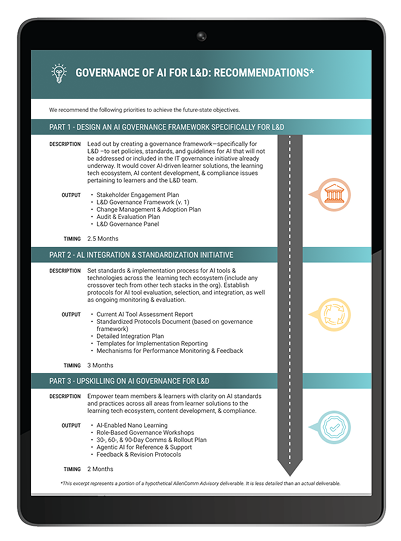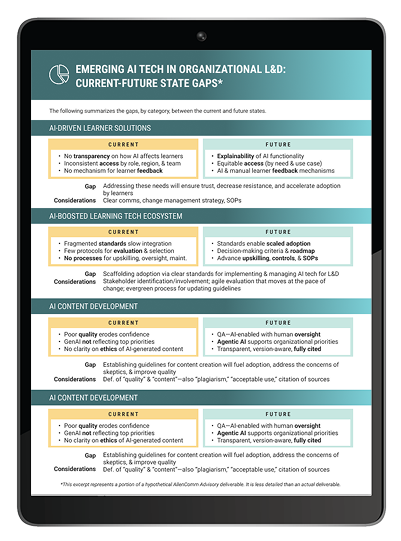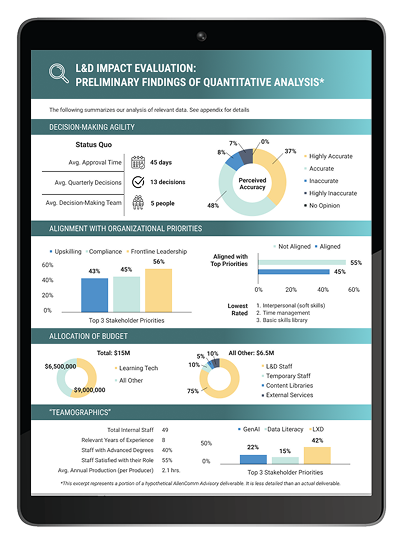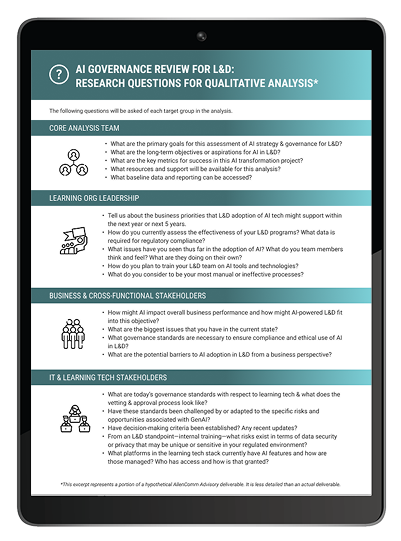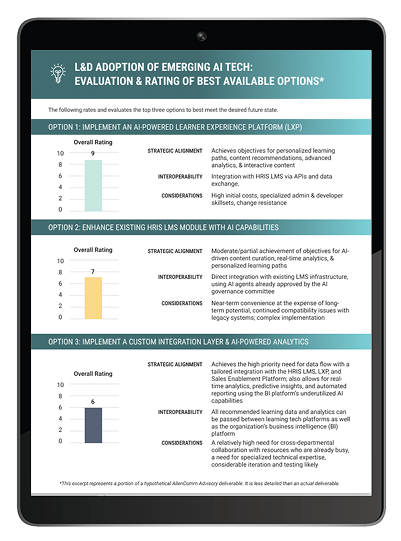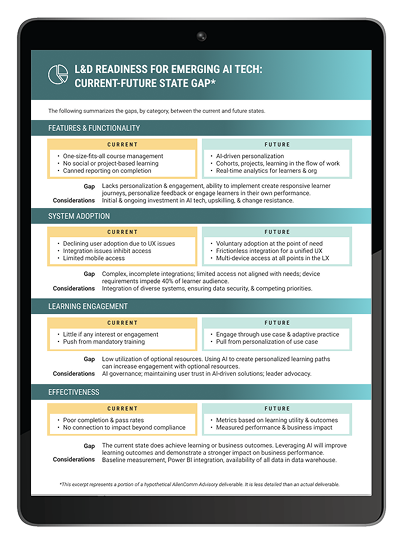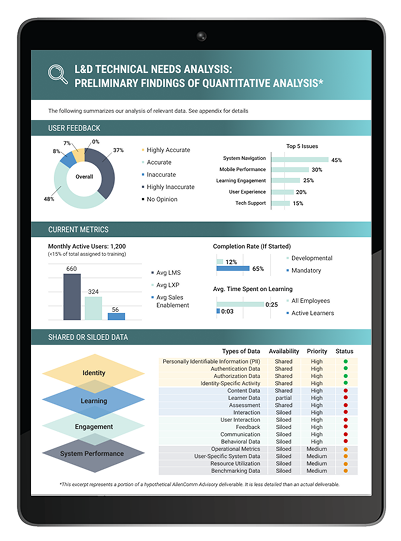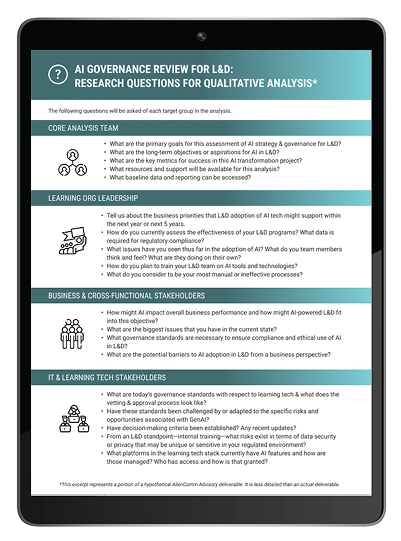
ALLENCOMM BLOG | Insights
The Learning Leader’s Guide To Onboarding Training Trends
January 16, 2025 By Christopher Pappas
This article was written by the eLearning Industry founder, Christopher Pappas.
Organizations are seeing continuous progress when it comes to onboarding, and this new year will be no different. As L&D leaders continue to move away from one-dimensional onboarding strategies and approaches, a greater emphasis on customization, technology, and employee experience will take place. In this article, we explore various onboarding training trends that companies are expected to focus on in 2025 in their efforts to reshape onboarding into a more effective and impactful process.
10 Onboarding Training Trends Your Business Needs
1. Improving Retention
Onboarding is a crucial component of building employee loyalty. From day one, the onboarding process must focus on fostering a sense of community and belonging for new hires. Instead of relying solely on unyielding checklists and forms, focus your energy on creating personalized learning paths and targeted content that make employees feel welcomed and valued for their unique skills. As a result, they will be more likely to stay with your company for longer and put their best foot forward.
2. Focusing On Employee Experience
An onboarding training trend organizations are already applying is designing with the employee experience in mind. Nowadays, there’s so much more to onboarding than filling out paperwork and completing training courses. Employees enjoy comprehensive and thought-out onboarding experiences that start before the first day of employment and consistently stay in touch with the employee to identify any necessary changes. For example, organizations conduct pulse checks and engagement surveys to identify how employees feel about the onboarding process using data and insights that cannot be extracted from a Learning Management System (LMS).
3. Engaging Hybrid And Remote Employees
Although many companies are promoting a return to the office, there is no denying that hybrid and remote work are here to stay. Naturally, onboarding needs to reflect this shift by adopting strategies that foster inclusivity and connectivity among remote employees. Some examples would be providing new hires with simulated tours of the office, using digital project management and training tools that are easily accessible, and investing in reliable communication platforms. This way, you can overcome physical distance and attract a wider pool of potential employees.
4. Adapting To Mobile Use
It is essential for businesses to understand that onboarding can take place outside of the workplace and on devices other than a work computer. Moving into the new year, make sure to design onboarding training content that is bite-sized and accessible on mobile devices, such as smartphones. This way, new hires will be able to complete their onboarding activities and remain engaged anywhere and anytime. Additionally, in-app satisfaction surveys will provide valuable engagement metrics that will shed light on the effectiveness of the mobile onboarding experience.
5. Providing Role-Specific Content
The time for one-size-fits-all onboarding has passed. Considering the diverse range of job roles and the varying levels of experience that new hires come with, it is essential for your onboarding strategy to take a more targeted approach. In other words, you need to create role-specific training paths that include personalized courses, workflows, and resources to match each employee’s unique needs. In doing so, you will create a more engaging onboarding experience as well as reduce the time it takes for new employees to become truly productive.
6. Experimenting With Innovative Technologies
Many of the onboarding training trends we describe in this article are dependent on using the right technology. To achieve a satisfactory level of immersion and, subsequently, engagement, you need to make sure you are utilizing tools that incorporate Augmented Reality (AR), Virtual Reality (VR), and Artificial Intelligence (AI), among others. These technologies can help create unique learning experiences for your employees, capturing their attention and helping them achieve great learning outcomes. For instance, AR can enhance gamification activities and boost learning retention, while AI can provide personalized learning content recommendations and in-depth analytics.
7. Expanding The Length Of Onboarding
For a long time, onboarding has been synonymous with a short process for most businesses. However, a growing trend is extending the length of onboarding from a few weeks to six months or even a year. This is a result of businesses realizing that a longer onboarding process is essential for helping employees reach their full potential and become a part of the corporate culture. This shift requires a comprehensive plan that includes both long-term and short-term goals that align not only with organizational objectives but also with each employee’s personalized development plan. Don’t forget to include continuous feedback loops and surveys to stay in touch with how your employees are experiencing onboarding and determine whether they need additional support.
8. Exploring Mentorship Or Peer Collaboration Programs
Collaborative learning is essential during onboarding. As employees enter a new workplace, acquiring new skills is not the only thing they need to do. They must also develop relationships with their colleagues in order to understand and adopt company values, gain access to valuable on-the-job insights, and develop a connection to the company. Mentorship and peer collaboration programs can help them achieve all that by offering employees some much-needed guidance and support as they take their first steps in the company. More experienced employees can share advice, resources, and feedback that a training course alone cannot provide.
9. Evaluating Readiness
L&D leaders have grown accustomed to using their LMS of choice to collect data for measuring the effectiveness of their onboarding strategies. However, they need to keep in mind that these traditional metrics can only tell you so much about the ways in which onboarding prepares employees to take on their new responsibilities. Moving forward, consider enriching this process with 360-degree feedback, manager and colleague evaluations, and knowledge assessments at various stages of the training program. A multifaceted approach to evaluating readiness will ensure that your onboarding training program is truly impactful.
10. Re-Evaluating Your Tech Stack
There is a lot of talk about technology in this article and the industry as a whole. However, the onboarding training trend in 2025 won’t be acquiring as many tools and software as possible. On the contrary, you must evaluate your tech stack to determine whether you have overcomplicated things for your employees or are overpaying for unnecessary features. For example, many businesses switched to LXPs for their enhanced functionalities, only to realize that their existing tools or an upgraded version of their LMS might have been able to cover their tech needs all along. Therefore, take a closer look at your tech stack to identify potential adjustments to boost cohesiveness and cost-effectiveness.
Conclusion
Onboarding is taking on a new form as we move into the new year. From simple and fast knowledge transfer, it has become a comprehensive process that ensures new employees are integrated into their new workplace effectively, providing an employee-centric experience that brings maximum results. Closely examine your current onboarding strategy and identify training trends you can incorporate to enhance its effectiveness and improve the overall experience for employees. If necessary, consider collaborating with the right partner who can guide you through the changes you need to implement and help you achieve your desired outcomes.
Useful Links
If you want to know more about the innovative ways in which AllenComm helps businesses revolutionize their onboarding practices, read the following success stories:
Resources For L&D Leaders
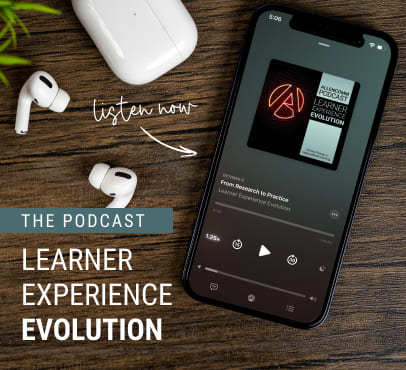
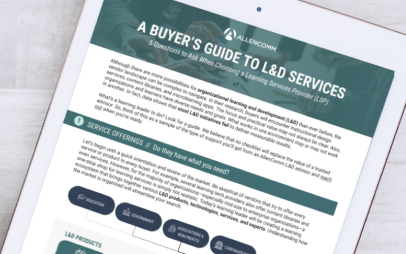
free guide
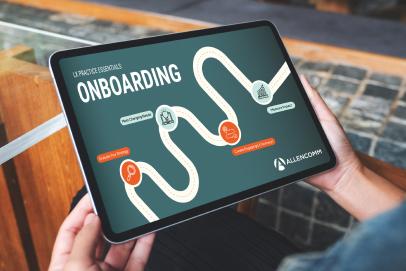
free guide
insights | on the blog

ALLENCOMM Webcast

